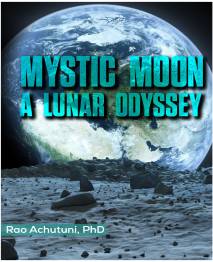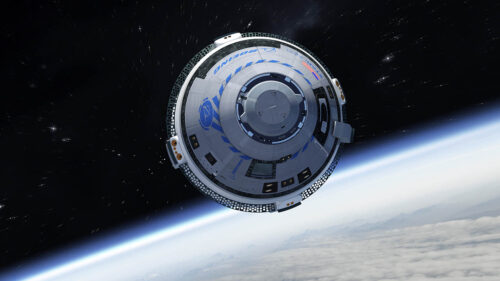Featured Image: Boeing Starliner CST-100 in Earth’s orbit. Credit: © Boeing https://www.boeing.com/space/starliner
In Apollo Legacy Space Exploration, we examine the crucial lessons from the Apollo missions and their relevance to modern space travel, including recent challenges faced by the Starliner program
Key Lessons from the Apollo Legacy for Space Exploration
NASA’s highly successful Apollo Program (1960s-70s) was marked by three Low Earth Orbit missions (Apollo 7, 9, and Apollo-Soyuz), two lunar orbit missions (Apollo 8 and 10), and six Moon landing missions (Apollo 11, 12, 14, 15, 16, and 17) . In total, there were twelve highly successful crewed missions. None of them, including Apollo 13 with its damaged Service Module, faced issues that prevented the crew from reentering Earth’s atmosphere and returning home safely—over fifty-five years ago. The technology used was simple, reliable, and effective. While there were several challenges, they were all eventually overcome. An excellent tribute to the contributions of several Apollo scientists and engineers who made it all possible is chronicled by NASA (Remembering the Giants).
The secret to the success of the Apollo Program was teamwork and a unified goal: enabling NASA to land a man on the Moon. A dedicated team of scientists, engineers, technicians, academics, corporations (primes), and numerous contractors worked tirelessly and with utmost dedication to help NASA fulfill President Kennedy’s challenge.
Designing space systems, especially for crewed missions, typically requires incorporating triple redundancy (backups) to mitigate or minimize issues that could threaten the mission. The only exception to this redundancy requirement was the unique Apollo Lunar Module Ascent Engine (LMAE). Weight restrictions precluded the inclusion of a backup ascent engine, meaning the task had to be accomplished with a single engine that was capable of working under any circumstances to ensure the crew could return safely. The pressure-fed surefire thruster developed by Rocketdyne incorporated Aerozine 50 for fuel and Nitrogen Tetroxide (N2O4) as oxidizer. The Lunar Module commander could activate it by simply flipping an on/off switch, and it delivered reliably for all of NASA’s Moon missions (Achutuni: Mystic Moon: A Lunar Odyssey).
Even a Low Earth Orbit (LEO) rescue mission can cost hundreds of millions of dollars, forcing the responsible agency to carefully weigh numerous factors, especially when lives are not in immediate danger.
How Apollo’s Success Informs Today’s Starliner Challenge
Unfortunately, Boeing’s Starliner test mission to the International Space Station (ISS) is experiencing issues with helium leaks and some of its thrusters, developed by Aerojet-Rocketdyne. High-pressure helium is used to pressurize the top of hypergolic bi-propellant tanks (Nitrogen Tetroxide (NTO) as oxidizer and Monomethyl Hydrazine (MMH) as fuel) to expel them into the combustion chamber. A lower-than-expected helium pressure could impede the proper flow of either propellant to the thrusters.
Building spacecraft is much like assembling an automobile, with components supplied by various vendors. Even the most reliable brands can encounter recalls. In Boeing’s case, the problematic Starliner thrusters were developed by Aerojet Rocketdyne, a reliable vendor that has provided engines for numerous NASA space missions, including the Apollo program. Space is unforgiving; equipment can fail even after hundreds of successful tests on Earth. The acclaimed Apollo program also faced numerous issues during its development, all of which were resolved by the vendors in time for the first mission.
The issues facing Boeing’s Starliner are to be expected in the development and testing of new systems. However, all problems should be resolved before launch. It is difficult, if not impossible, to fix hardware issues after launch. This situation can be alternatively envisioned as an opportunity to understand why time-tested thruster technology can fail. Several other factors could be at play, such as frozen propellant lines or electrical issues. It’s important to use this opportunity to rule out all possibilities. Boeing and its partners will resolve helium leak issues and render the Starliner back in service. NASA must continue to invest in the development of multiple crew delivery vehicles—the golden rule in space exploration is never to put all your eggs in one basket.
Longevity in Space
Astronauts Sunita Williams and Butch Wilmore are career NASA astronauts assigned to test new technologies in preparation for future Artemis and planetary missions. Space travel is not for everyone; few people can adapt to weightlessness and hardships associated with long-term missions.
In 2022, NASA astronaut Frank Rubio had to extend his planned six-month stay on the ISS by another six months when his designated Soyuz spacecraft developed a leak. Frank and two Russian cosmonauts Sergey Prokopyev and Dmitri Petelin returned home safely in a replacement craft. In the process, Frank established a new U.S. record for long duration space flight after spending 371 days in space.
Several other astronauts from both the U.S. and Russia have spent more than a year aboard the International Space Station. Yes, long-term space missions come with issues like bone loss, but astronauts can minimize these risks through a strict regimen of exercise, diet, and medical supplements.
An unscheduled rescue mission in space can cost hundreds of millions of dollars, so enthusiastic space tourists must be cognizant of the risks involved and mentally prepare themselves for any unforeseen consequences. Space travel is somewhat akin to formula racing; superficially it may appear glorious, but there are still some inherent risks involved at this stage of our technological development.
Civilian LEO missions such as Inspiration4 (2022) and the upcoming SpaceX Polaris Dawn mission, both funded by the entrepreneur and space-buff Jared Isaacman, continue to spearhead space exploration. Isaacman is poised to become the first private astronaut to conduct Extravehicular Activity (EVA) at an orbital altitude of about 435 miles (700 kms). SpaceX also plans to test its new versions of EVA spacesuits that may eventually be used in future lunar missions and colonization of the Moon (SpaceX).
What’s Next NASA
NASA’s decision to delay the return of astronauts Sunita Williams and Butch Wilmore until the next return trip of the SpaceX crew appears to be the best option under the circumstances. Unforeseen delays are inevitable when testing new technology in space. This will also enable Boeing to regroup and rectify issues with the Starliner and render it into service. That’s what test flights are all about!
Such incidents also reinforce the need to develop simple, yet surefire backup (redundant) technologies that can assure safe return of crew. The Apollo Program accomplished this feat over fifty years ago with Rocketdyne’s surefire technology that brought every Apollo astronaut safely home to Earth (Harmon, 2009).
NASA’s contractors and their numerous “subs” should work toward the common goal of ensuring success in all of the host space agency’s complex missions. This collective goal should never be overshadowed by individual quest for superiority. Participating contractors must be cognizant that teamwork is the key to the success of Team USA. The real competition is from other countries, such as China, India, and other new entrants in the space race.
Learn More About the Apollo Missions
We welcome you to read our book Mystic Moon: A Lunar Odyssey. We expound on the Apollo legacy and proven interactions with celestial beings.


